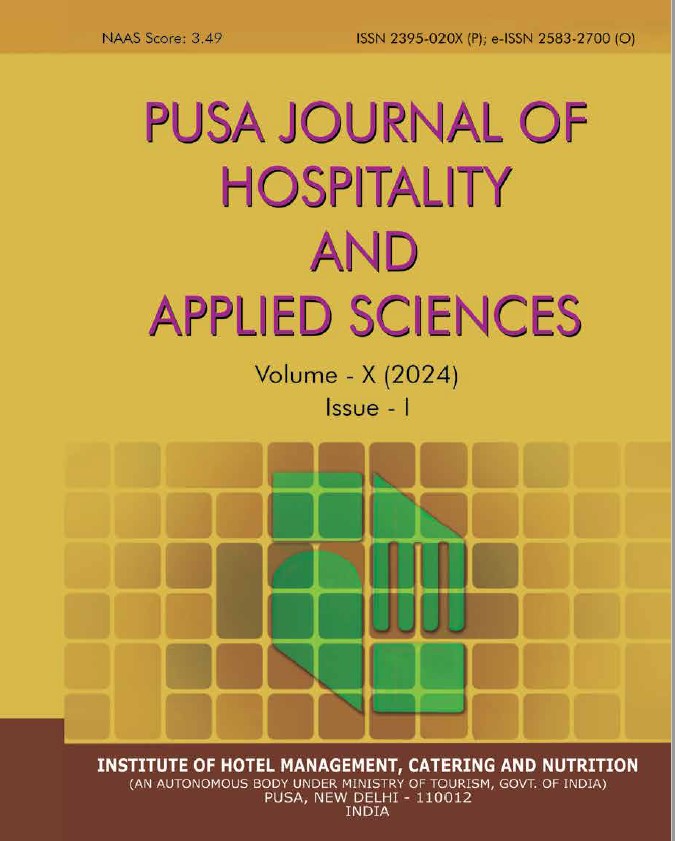Prevalence Of Anaemia Amongst Rural Adolescent Girls
Keywords:
Adolescent girls, Anaemia, Clinical Assessment, HaemoglobinAbstract
Background: Iron deficiency anaemia is a global problem of immense public health significance. Its prevalence is seen to be high amongst the adolescent girls. Objective: To find out the prevalence of iron deficiency anaemia amongst rural adolescent girls. Methodology: The study was conducted on rural adolescent girls (n=100) aged 15-17 years from Palsana, Sikar district, Rajasthan. Socio Demographic details of the subjects were collected. Clinical and biochemical assessment of haemoglobin estimation was done. Results: The mean age of all the subjects was found to be 15.92 years. Majority of girls were having yellowness in eyes (75%) and nails (70%). Mean haemoglobin of all subjects was 9.60 gm/dl. All subjects were found to be anaemic. Conclusion: Prevalence of anaemia was found to be high. Adolescent girls are vulnerable to iron deficiency anaemia especially in the rural settings. Timely and rapid assessments should be conducted for early identification.
References
Abalkhal, B., & Shawky, S. (2002). Prevalence of daily breakfast intake, iron deficiency anaemia and awareness of being anaemic among Saudi school students. Journal of Food Science and Nutrition, 53, 519-528.
Aggarwal, D. (2010). Effect of frequency and doses of iron folic acid supplementation on blood haemoglobin of anaemic adolescent girls. Nutrition in Disease Management, 45, 7-12.
Agrawal, V., & Tejwani, S. (1999). Prevalence of Iron Deficiency Anaemia in Indian antenatal women especially in rural areas. Indian Medical Gazette, September, 300-3.
Akhter, N., & Haselow, N. (2010). Using data from a nationally representative nutrition survelliance system to assess trends and influence nutrition programs and policy. The Journal of Field Actions, 4.
Amani, R., & Maryam. S. (2006, September). Nutrition education alone improves dietary practices but not haematologic indices of adolescent girls in Iran. Food and nutrition Bulletin.
Basu, S., Basu, S., Hazarika, R., & Parmar, V. (2005). Prevalence of anaemia among school going adolescents of Chandigarh. Indian Paediatrics, 42, 593-597.
District Level Health Surveys. (2002-2004). Ministry of Health and Family Welfare, Government of India. Retrieved from: rchiips.org/pdf/rch2/ National_ Report_RCH-II.pdf
Gawarikar, R. S., Gawarikar, S. B., & Tripathi, B. C. (2002). Prevalence of Anaemia in Adolescent Girls of Ujjain in Western M.P. Indian Journal of Nutrition and Dietetics, 39, 493-499.
Government of India, 10th Five Year Plan, Planning Commission, India, (2002). Retrieved from: Planningcommission.nic.in/plans/planrel/fiveryr/10th/10defaultchap.htm.
Kowsalya, S. (2008). Impact of supplementation of lotus stem on the iron level of adolescent girls in Manipur. Indian Journal of Nutrition and Dietetics, 45, 47-53.
Kulkarni, V. M., Durge, M. P., & Kasturwar, B. N.(2012). Prevalence of anaemia among adolescent girls in urban slum. National Journal of Community Medicine, 3(1), 108-111.
Kumari, S., & Singh, S. (2003). Nutritional status of scheduled caste adolescents from deprived section of society. Indian Journal of Nutrition and Dietetics, 147-152.
National Family Health Survey India. (1998-1999). International Institute of Population sciences, measures International, Demographic Health Survey (2000).
National Family Health Survey-3. (2005-2006). September, 2007. International Institute for Population Sciences, Mumbai. India, 290.
National Institute of Health and Family Welfare. (2009). Retrieved on: 2012, January.
National Nutritional Monitoring Bureau Technical Report No. 22. Pravalence of Micronutrient deficiencies. ICMR 2003, 16.
Patel, H. Z., & Shah, P. U. (2009). A study about anaemic condition of adolescent girls by haemoglobin estimation and dietary survey. International Research Journal, 3, 86-87.
Rawat, C. M. S., Garg, S. K., Singh, J. V., & Bhatanagar, M. (2008). Socio Demographic correlated of anaemia among adolescent girls in rural areas of district Meerut (UP). Studies on adolescent girls. 49-50.
Robinson, C. H., Lawler, M. R., Chenoweth, W. L., & Garwick, A. E. (2007). Normal and Therapeutic Nutrition (17th ed.): Macmilian Publishing Company, 127.
Sajjan, J. T. (2008). Consumption pattern of green leafy vegetables and impact of nutrition education on haemoglobin levels of rural adolescent girls. University of Agricultural sciences, Dharwad.
Shah, B. K., & Gupta, P. (2002). Weekly vs. daily iron and folic acid supplementation in adolescent Nepalese girls. Archives of Paediatrics and Adolescent Medicine, 156, 131-135.
Shobha, S., & Sharda, D. (2008). Efficacy of twice weekly iron supplementation in anaemia adolescent girls. Studies on adolescent girls. 57-58.
Siddharam, S. M., Venketesh, G. M., & Thejeshwari , H. L. (2011). A study of anaemia among adolescent girls in rural area of Hasan district Karnataka, South India. International Journal of Biological and Medical Research, 2(4), 922-924.
Sidhu, S., Kumari, K., & Uppal, M. (2005). Prevalence of anaemia among adolescent girls of scheduled caste community in Punjab. Anthropologist, 7(4), 265-267.
Singh, N., & Jain, R. (2008, September). Weekly iron and folic acid supplementation with counselling reduces anaemia in adolescent girls: a large-scale effectiveness study in Uttar Pradesh. Food and Nutrition Bulletin.
Sonkamble, U. J., Goswami, B., Sahu, A. B., & Prabhu P. (2006, December). 2002-2004. Nutritional status of children and prevalence of anaemia among children, adolescent girls and pregnant women, District Level Household Survey, 33-39.
Stoltzfus, R. J., & Dreyfuss, M. L. (1998). Guidelines for the use of iron supplements to prevent and treat iron deficiency anaemia, Geneva.
Swarnalath, A., & Yegammai, C. (2008). Impact of Iron, vitamin A and vitamin C supplementation on anaemic adolescent girls. Studies on adolescent girls, 59-60.
Tiwari, K. (2004). Prevention and Control of Nutritional Anaemia: A South Asia Priority. UNICEF, 4.
World Health Organization. (2011). Prevention of Iron Deficiency Anaemia in Adolescents: Role of weekly iron and folic acid supplementation. Regional office of South East Asia, 42.




